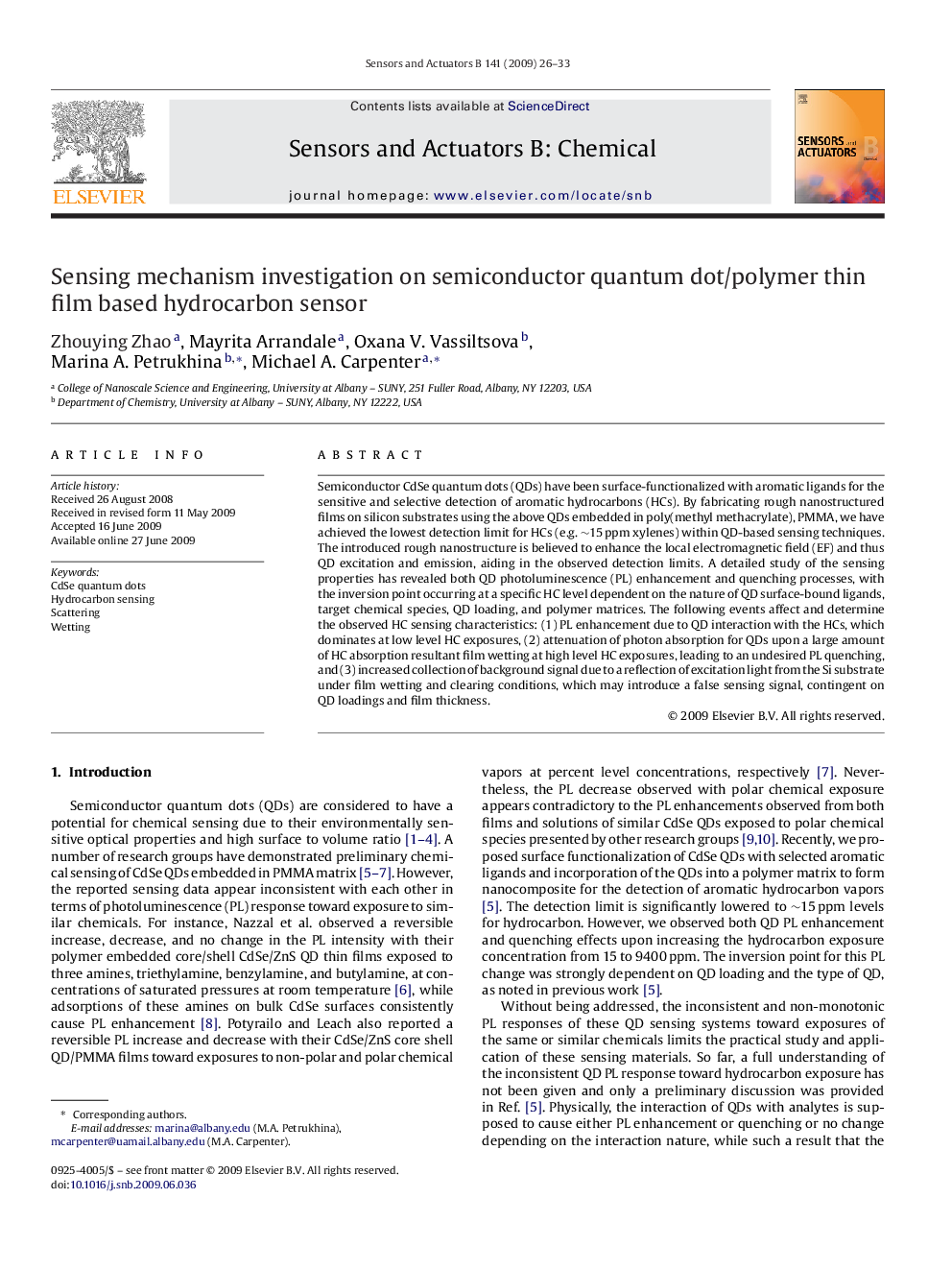| Article ID | Journal | Published Year | Pages | File Type |
|---|---|---|---|---|
| 745051 | Sensors and Actuators B: Chemical | 2009 | 8 Pages |
Semiconductor CdSe quantum dots (QDs) have been surface-functionalized with aromatic ligands for the sensitive and selective detection of aromatic hydrocarbons (HCs). By fabricating rough nanostructured films on silicon substrates using the above QDs embedded in poly(methyl methacrylate), PMMA, we have achieved the lowest detection limit for HCs (e.g. ∼15 ppm xylenes) within QD-based sensing techniques. The introduced rough nanostructure is believed to enhance the local electromagnetic field (EF) and thus QD excitation and emission, aiding in the observed detection limits. A detailed study of the sensing properties has revealed both QD photoluminescence (PL) enhancement and quenching processes, with the inversion point occurring at a specific HC level dependent on the nature of QD surface-bound ligands, target chemical species, QD loading, and polymer matrices. The following events affect and determine the observed HC sensing characteristics: (1) PL enhancement due to QD interaction with the HCs, which dominates at low level HC exposures, (2) attenuation of photon absorption for QDs upon a large amount of HC absorption resultant film wetting at high level HC exposures, leading to an undesired PL quenching, and (3) increased collection of background signal due to a reflection of excitation light from the Si substrate under film wetting and clearing conditions, which may introduce a false sensing signal, contingent on QD loadings and film thickness.
